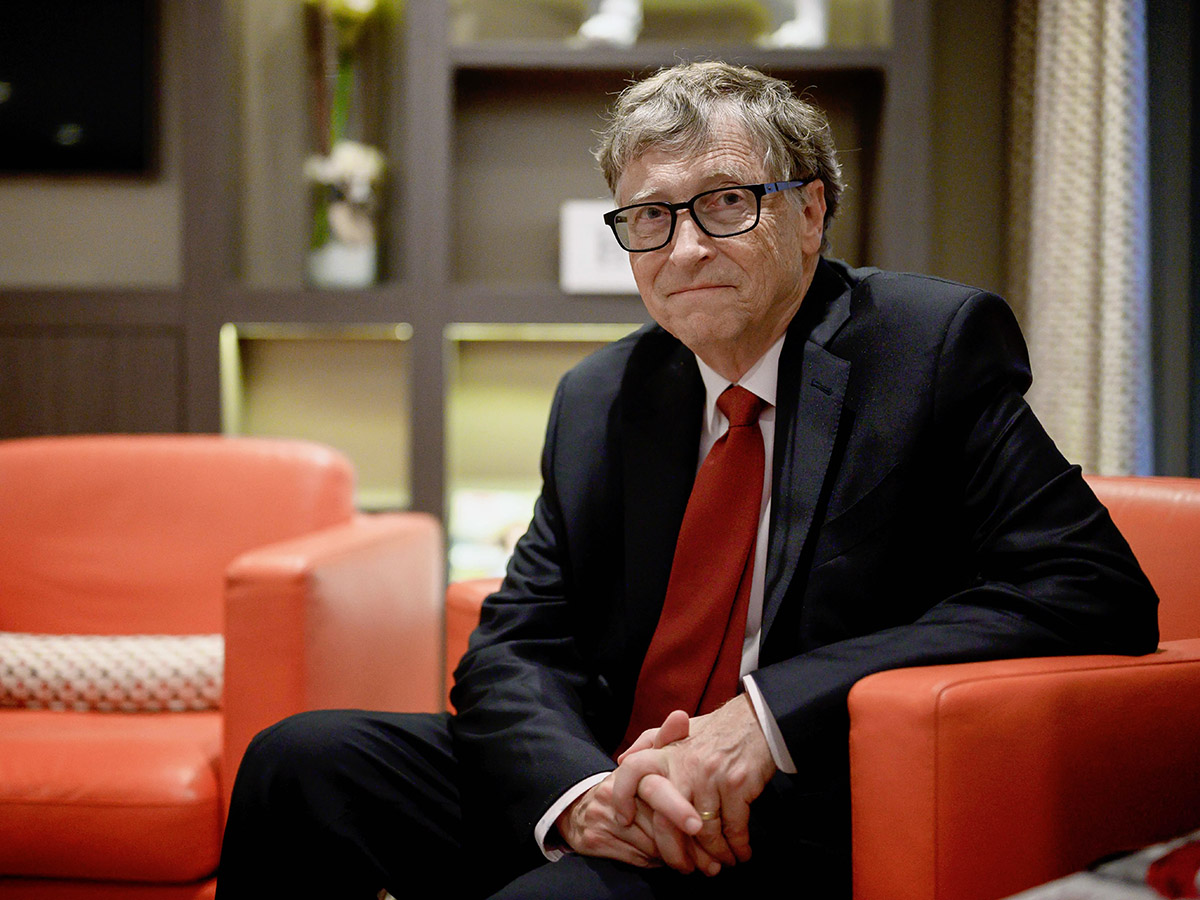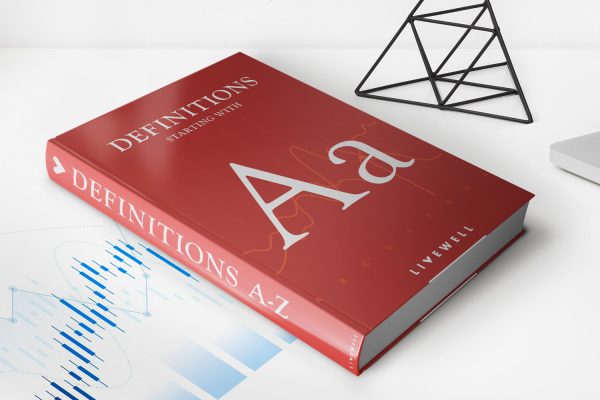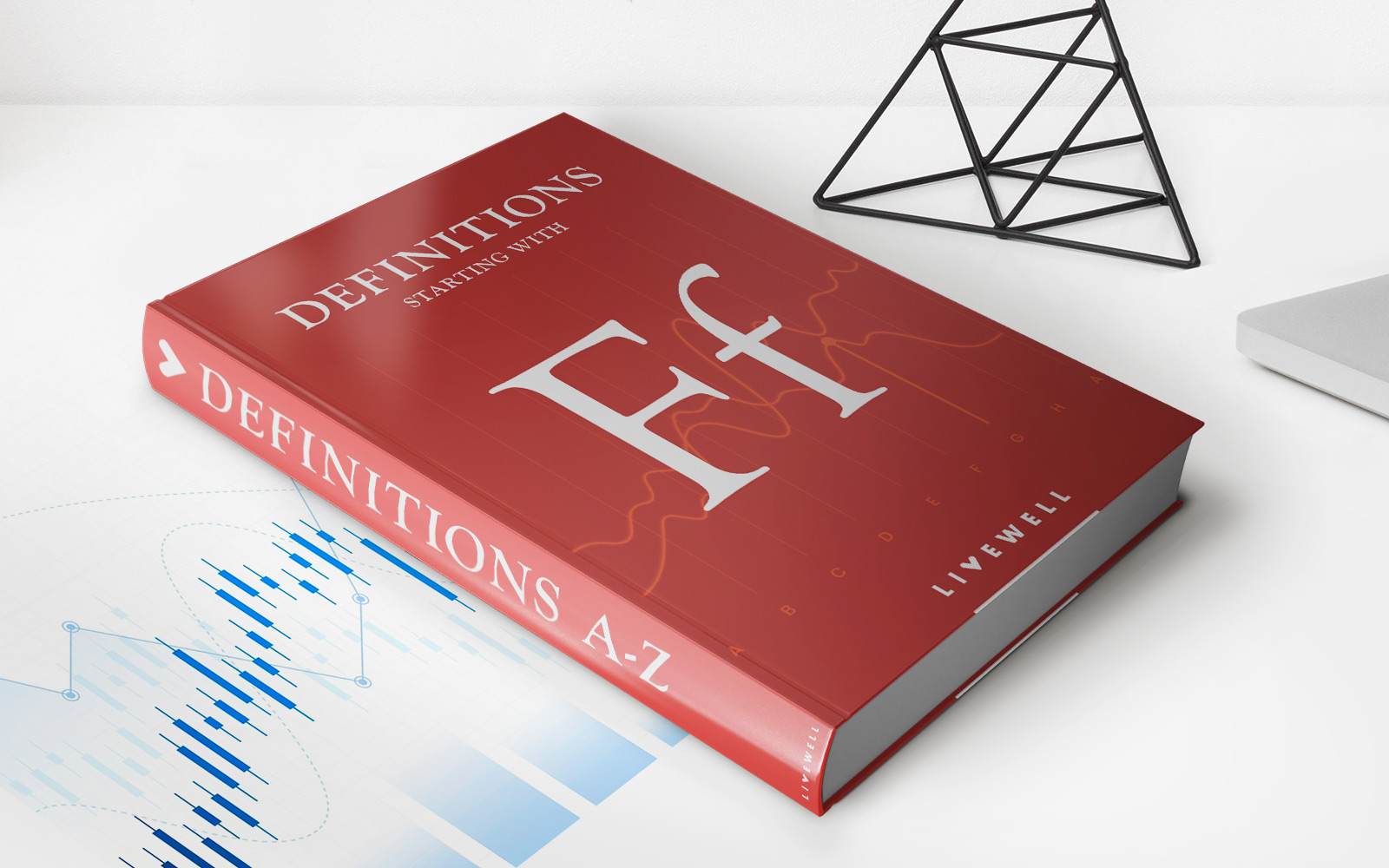

Finance
How Much Liquid Assets Does Bill Gates Have
Modified: January 15, 2024
Discover the financial prowess of Bill Gates with our comprehensive analysis. Find out how much liquid assets the renowned entrepreneur possesses in this in-depth article.
(Many of the links in this article redirect to a specific reviewed product. Your purchase of these products through affiliate links helps to generate commission for LiveWell, at no extra cost. Learn more)
Table of Contents
Introduction:
When discussing the financial status of billionaires, few names resonate as strongly as Bill Gates. As the co-founder of Microsoft and one of the wealthiest individuals in the world, Gates has accumulated a vast fortune over the years. However, it is not just the total value of his wealth that sparks curiosity – it is also the composition of his assets. In particular, people often wonder how much liquid assets Bill Gates has.
Throughout this article, we will delve into the intricate world of finance to understand the concept of liquid assets, and explore the details of Bill Gates’ wealth in this context. From examining the breakdown of his liquid assets to discussing the factors influencing their value, we will provide an in-depth analysis. Furthermore, we will compare Gates’ liquid assets to those of other wealthy individuals, offering a broader understanding of his financial standing.
Whether you are an avid follower of finance or simply interested in the lives of the ultra-rich, join us as we unravel the mystery of Bill Gates’ liquid assets. Let’s embark on this journey through the intricate web of wealth, liquidity, and the fascinating world of high-stakes finance.
Overview of Bill Gates’ wealth:
Before diving into the discussion of Bill Gates’ liquid assets, it is essential to gain a comprehensive understanding of his overall wealth. With an estimated net worth of over $100 billion, Gates consistently ranks among the richest individuals globally.
Gates’ wealth primarily stems from his co-founding of Microsoft, a company that revolutionized the computer industry. As the company grew, so did his financial fortunes. Gates served as Microsoft’s CEO until 2000 and remained its chairman until 2014. Despite stepping down from these positions, he continues to be an influential figure within the company.
However, it is worth noting that Gates’ wealth extends beyond his involvement with Microsoft. He is an astute investor and philanthropist, leveraging his resources to make a positive impact on society through the Bill & Melinda Gates Foundation. This philanthropic venture has focused on healthcare, education, and poverty alleviation, making a significant difference in countless lives worldwide.
Gates’ wealth fluctuates with the performance of his investments, including his stake in Microsoft. In recent years, he has diversified his portfolio across various industries, including technology, energy, and real estate. These investments contribute to his overall financial standing and provide him with a diverse range of assets.
Now that we have a broad understanding of Gates’ wealth, let us examine the concept of liquid assets and how they factor into his financial profile.
Definition of liquid assets:
Before delving into the details of Bill Gates’ liquid assets, it is crucial to understand what exactly constitutes a liquid asset. In finance, liquid assets refer to those that can be easily converted into cash without incurring significant losses in value. These assets are highly desirable as they provide individuals with immediate access to funds, allowing for flexibility in financial decision-making.
Common examples of liquid assets include cash, bank deposits, stocks, bonds, and certain types of securities. These assets hold liquidity due to their ability to be quickly sold or converted into cash without significant transaction costs or delays.
On the other hand, illiquid assets are those that are not easily converted into cash or may involve substantial time, effort, or expense to do so. Examples of illiquid assets include real estate, private equity investments, and certain types of alternative investments.
For wealthy individuals like Bill Gates, the composition of their assets is often a combination of liquid and illiquid holdings. While illiquid assets may provide potential long-term value and stability, liquid assets offer immediate access to funds, which can be crucial in certain situations.
In the case of Gates, it is interesting to examine the proportion of his wealth that is in liquid assets. This analysis gives us insights into his financial flexibility and ability to fund various endeavors, such as investments, philanthropic initiatives, and personal expenses.
Now that we have a clear understanding of liquid assets, let us move on to exploring the breakdown of Bill Gates’ liquid assets.
Bill Gates’ ownership of liquid assets:
As one of the wealthiest individuals in the world, it comes as no surprise that Bill Gates possesses a substantial amount of liquid assets. While the specific breakdown of his holdings may not be publicly disclosed, it is widely known that Gates maintains a diverse portfolio of liquid investments.
Gates’ ownership of liquid assets includes a significant amount of financial instruments such as stocks and bonds. Being an astute investor, he has strategically allocated his resources across a range of companies and industries, both domestic and international. This diversified approach helps to mitigate risk while potentially maximizing returns.
In addition to stocks and bonds, Gates also holds substantial amounts of cash and bank deposits. These liquid assets provide him with immediate access to funds and financial flexibility. They serve as a safety net, enabling him to seize investment opportunities, make charitable contributions, or cover unforeseen expenses.
Furthermore, Gates’ ownership of liquid assets extends to other financial instruments such as mutual funds and exchange-traded funds (ETFs). These investment vehicles offer him exposure to various asset classes, including equities, fixed income securities, and commodities. By diversifying his investments in this manner, Gates can capitalize on market opportunities and manage risk.
It is important to note that while Gates possesses a significant amount of liquid assets, his overall wealth is not entirely liquid. Like many ultra-wealthy individuals, he also holds a substantial amount of illiquid assets, including real estate properties, private equity investments, and other alternative investments. These illiquid assets provide stability and potential long-term value to Gates’ overall financial portfolio.
While the exact figures of Gates’ ownership of liquid assets may not be disclosed, his approach to wealth management and investment strategies suggest that he prioritizes liquidity to maintain flexibility in his financial decisions.
Now that we have explored Gates’ ownership of liquid assets, let us analyze the breakdown of these assets in more detail.
Breakdown of Bill Gates’ liquid assets:
Although the precise breakdown of Bill Gates’ liquid assets is not publicly available, it is widely speculated that his portfolio consists of a variety of investment holdings and cash equivalents.
One significant aspect of Gates’ liquid assets is his extensive stock portfolio. His investments encompass a combination of large-cap companies, technology firms, and diverse industries. These stocks offer the potential for capital appreciation and dividend income, making them an essential part of his liquid asset allocation.
In addition to stocks, Gates is also known to hold a portion of his liquid assets in bonds. Bonds provide a steady stream of income through interest payments and are considered relatively low-risk investments. By diversifying his portfolio with bonds of varying durations and credit qualities, Gates can balance the potential rewards with a level of stability.
Cash and cash equivalents hold substantial importance in Gates’ liquid asset breakdown. These include not only physical currency but also cash-like instruments such as money market funds and treasury bills. The holding of cash equivalents allows for immediate access to funds, offering flexibility in his financial decision-making.
Gates also holds liquid assets in the form of exchange-traded funds (ETFs) and mutual funds. These investment vehicles provide exposure to a wide range of assets and allow for diversification without the need for direct ownership of individual stocks or bonds. By investing in ETFs and mutual funds, Gates can benefit from professional management and market exposure.
Moreover, Gates has made strategic investments in private companies, which may fall under his liquid asset allocation. While these investments may not be easily tradeable on public markets, they can still hold a significant value and liquidity potential if the opportunity for an initial public offering (IPO) or acquisition arises.
It is essential to acknowledge that the breakdown of Gates’ liquid assets may change over time as he adjusts his investment strategy or takes advantage of new opportunities. However, based on his investment approach and public disclosures, it is evident that Gates maintains a well-rounded and diversified portfolio of liquid assets.
Now that we have examined the breakdown of Gates’ liquid assets, let us explore the various factors that can influence the value of these assets.
Factors influencing the value of Bill Gates’ liquid assets:
The value of Bill Gates’ liquid assets can be influenced by a variety of factors, ranging from global economic conditions to industry-specific dynamics. Understanding these factors is crucial in comprehending the potential fluctuations in the value of his holdings.
1. Economic factors: The overall state of the economy, including factors such as interest rates, inflation, and GDP growth, can impact the value of Gates’ liquid assets. Economic downturns can lead to declines in stock prices and reduced demand for bonds, while strong economic growth can boost the value of these assets.
2. Market conditions: Market conditions within specific industries, such as technology or healthcare, can also influence the value of Gates’ liquid assets. Market trends, consumer behavior, and competition can impact the performance of stocks and other investments.
3. Company-specific factors: The financial performance and outlook of individual companies in which Gates holds stocks or investments can greatly sway the value of his liquid assets. Factors such as earnings reports, product launches, management changes, and industry disruptions can affect stock prices and overall portfolio value.
4. Global events: Geopolitical events, such as trade disputes, political instability, or natural disasters, can have a significant impact on the value of Gates’ liquid assets. These events can disrupt markets, trigger volatility, and influence investor sentiment.
5. Currency fluctuations: As an international investor, changes in currency exchange rates can affect the value of Gates’ liquid assets. Appreciation or depreciation of currencies against the US dollar can impact the returns on foreign investments and subsequently impact the overall value of his portfolio.
6. Investor sentiment: Investor sentiment and market psychology can play a role in determining the value of liquid assets. Positive sentiment can drive up stock prices, while negative sentiment can lead to sell-offs and declining asset values.
7. Regulatory and legal factors: Changes in regulations or legal proceedings related to industries or specific companies can affect the value of Gates’ liquid assets. Legal disputes, regulatory interventions, or changes in government policies can impact investor confidence and asset values.
It is important to note that as a long-term investor, Gates’ investment strategy may not be significantly influenced by short-term fluctuations in the value of his liquid assets. Nevertheless, these factors can still impact the overall performance and value of his portfolio over time.
Now that we have explored the factors that can influence the value of Gates’ liquid assets, let us compare his liquid asset holdings with those of other wealthy individuals.
Comparison to other wealthy individuals’ liquid assets:
When it comes to the liquid assets of wealthy individuals, Bill Gates is among a select group of billionaires with substantial liquidity in their portfolios. Comparing his liquid asset holdings to those of other high-net-worth individuals provides valuable insights into the differences and similarities in their financial approaches.
One notable comparison is Warren Buffett, the chairman and CEO of Berkshire Hathaway. While Buffett’s net worth is also in the billions, his approach to liquid assets differs from Gates. Buffett prefers to hold a larger proportion of his wealth in cash and cash equivalents, ensuring immediate access to funds for potential acquisitions or investment opportunities. This approach aligns with his value investing strategy, aimed at identifying undervalued companies.
Another wealthy individual with significant liquid assets is Amazon founder Jeff Bezos. While Bezos’ net worth primarily stems from his ownership stake in Amazon, he also holds substantial amounts of cash, bonds, and other liquid investments. Similar to Gates, Bezos takes a diversified approach to his liquid asset holdings to preserve value and provide financial flexibility.
However, it is important to note that not all wealthy individuals prioritize liquidity in the same manner. Some may choose to allocate a higher percentage of their wealth into illiquid assets like real estate, private equity, or alternative investments. These assets provide potential long-term growth and can act as a hedge against market volatility.
Comparing Gates’ liquid assets to other wealthy individuals underscores the diversity of financial strategies among the ultra-rich. Each individual’s investment goals, risk tolerance, and personal preferences influence their approach to liquidity. While Gates maintains a significant portion of his wealth in liquid assets, others may prioritize illiquid holdings based on their unique circumstances and investment philosophies.
It is worth mentioning that the allocation of liquid assets can change over time as circumstances, investment opportunities, and market conditions evolve. Consequently, it is essential for wealthy individuals to regularly assess and adapt their liquid asset allocation to optimize returns and manage risk.
Now that we have compared Gates’ liquid asset holdings to other wealthy individuals, let us conclude our exploration of his wealth and liquid assets.
Conclusion:
In conclusion, Bill Gates, with his vast wealth and influential position in the world of technology and finance, possesses a considerable amount of liquid assets. While the specific breakdown of his holdings may not be publicly available, it is evident that Gates strategically balances his wealth across a combination of stocks, bonds, cash, and other financial instruments.
Understanding the concept of liquid assets is essential in comprehending Gates’ financial profile. Liquid assets, which can be easily converted into cash, offer him financial flexibility, allowing for immediate access to funds and the ability to navigate various investment opportunities.
Gates’ ownership of liquid assets, such as stocks, bonds, and cash equivalents, ensures that he has a diversified portfolio and the ability to withstand market fluctuations. These assets not only provide him with the means to make strategic investment decisions but also contribute to his philanthropic efforts through the Bill & Melinda Gates Foundation.
While Gates’ liquid assets are substantial, it is important to recognize that his overall wealth is comprised of a combination of liquid and illiquid assets. This balance allows him to benefit from both short-term liquidity and long-term value appreciation.
Comparing Gates’ liquid asset holdings to those of other wealthy individuals reveals the diversity in financial strategies and priorities among the ultra-rich. Each individual’s approach to liquidity is influenced by their investment goals, risk tolerance, and personal preferences.
As Gates continues to shape his asset allocation and adapt to changing market conditions, his liquid assets will play a vital role in his ability to seize opportunities, support charitable initiatives, and maintain financial stability.
Exploring the world of Bill Gates’ liquid assets provides a fascinating glimpse into the intricate web of wealth, investment strategies, and financial decision-making of one of the world’s richest individuals. It serves as a reminder of the complexities and considerations involved in managing significant wealth and highlights the importance of liquidity in maintaining financial resilience.
As the financial landscape evolves, we can undoubtedly expect Gates’ liquid assets to adapt to new opportunities, demonstrating his keen insights and ability to navigate the ever-changing economic environment.














